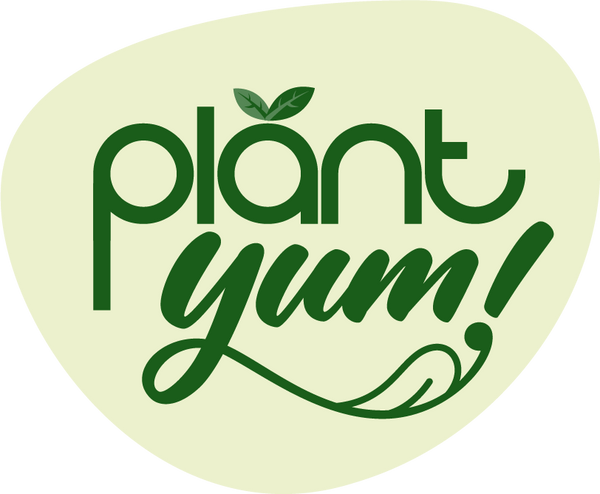
Understanding Lactose Intolerance and Its Symptoms
Share
Lactose intolerance is a common digestive condition where the body struggles to break down lactose—a natural sugar found in milk and dairy products. Many people experience discomfort after consuming dairy, and this issue is especially prevalent among those who lack sufficient lactase, the enzyme responsible for digesting lactose. In this post, we’ll explore what lactose intolerance is, discuss its common symptoms, and share simple ways to manage it by switching to plant-based alternatives.
What Is Lactose Intolerance?
Lactose intolerance occurs when your body produces little or no lactase. As a result, undigested lactose travels to the colon, where it ferments and causes discomfort. Unlike a dairy allergy, which involves the immune system, lactose intolerance is a digestive issue. This condition can affect anyone, but it is particularly common among certain ethnic groups, including many in South Asia.
Common Symptoms of Lactose Intolerance
If you find yourself experiencing digestive discomfort after consuming dairy, you might be dealing with lactose intolerance. Some of the most common symptoms include:
- Bloating and Abdominal Discomfort: A feeling of fullness or swelling in the stomach.
- Excess Gas: Increased flatulence as undigested lactose ferments in the colon.
- Diarrhea or Loose Stools: Frequent watery bowel movements after dairy consumption.
- Stomach Cramps: Painful cramping in the abdominal area.
- Nausea: Some individuals may feel sick or even vomit after eating dairy.
Recognizing these symptoms can help you make informed dietary choices and reduce discomfort.
Why Does Lactose Intolerance Occur?
- Most people naturally experience a decline in lactase production after infancy, which can lead to lactose intolerance. This process typically begins in childhood, around 2-3 years of age, and continues into adulthood. However, the onset and severity of lactose intolerance vary among individuals and ethnic groups, with some people developing symptoms earlier than others. While approximately 65% of the global population experiences some degree of lactose intolerance, the timing and extent of this decline depend on genetic and environmental factors.
-
Gut health conditions or infections can further impact lactase production.
- Lactose intolerance is more common in populations where dairy has not traditionally been a dietary staple.
Understanding the reasons behind lactose intolerance can empower you to manage it more effectively.
Managing Lactose Intolerance with Plant-Based Alternatives
For those who experience lactose intolerance, switching to plant-based alternatives can be a game-changer. Instead of relying on dairy, you can enjoy the same comforting beverages using naturally derived ingredients. At Plant Yum, we offer a range of dairy-free products that make this transition easy.
For example, our Plant Yum Tea Premix is an excellent option if you love a warm cup of tea. It’s designed to deliver the rich, traditional flavor of tea without the heaviness of dairy. And if you miss the creamy texture of milk tea, try mixing your tea premix with our Coconut Milk Powder for a delicious dairy-free alternative.
If you're looking for dairy-free alternatives, you can try Creamer Trial Pack, which includes coconut milk powder, oats creamer, and rice creamer—a convenient way to explore different plant-based alternatives.
Switching to Dairy-Free Alternatives
Adopting plant-based alternatives to dairy not only helps manage lactose intolerance but also offers several other benefits:
1. Improved Digestive Comfort
Without lactose to digest, your stomach is less likely to experience bloating, cramps, or discomfort. Plant-based beverages made from whole, natural ingredients support a healthier digestive system and can lead to better overall gut health.
2. Steady Energy and Hydration
Plant-based beverages are often easier on digestion and can be a refreshing alternative to dairy-based drinks. They offer a light and nourishing option for those seeking a smoother drinking experience.
3. Enhanced Nutritional Balance
When you switch to dairy-free alternatives, you open up the opportunity to incorporate other nutrient-rich ingredients. Products like coconut milk powder and Rice/oats creamer offer beneficial fats and vitamins that contribute to a well-balanced diet.
Tips for a Dairy-Free Lifestyle
Transitioning to a dairy-free lifestyle doesn’t have to be daunting. Here are a few simple tips to help you manage lactose intolerance effectively:
- Start Gradually: Replace dairy with plant-based alternatives slowly, allowing your body to adjust.
- Experiment with Recipes: Try out different recipes using plant-based milk and creamers. Whether it’s your morning tea or your favorite latte, small changes can make a big difference.
- Educate Yourself: Learn more about lactose intolerance and the benefits of plant-based diets. This knowledge can help you make informed decisions about your nutrition.
- Explore Quality Products: Invest in high-quality, clean-label alternatives like those offered by Plant Yum to ensure you’re getting the best natural ingredients without unwanted additives.
Lactose intolerance is a common challenge, but it doesn’t have to hold you back from enjoying your favorite beverages. By recognizing the symptoms and understanding the causes, you can make smarter choices for your health. Embracing plant-based alternatives—like our Plant Yum Tea Premix paired with Coconut Milk Powder or our Creamer Trial Pack—allows you to enjoy the comforting flavors of tea and other drinks without the discomfort of lactose.
Incorporate these simple, dairy-free options into your daily routine and experience improved digestion, sustained energy, and enhanced overall well-being. Make the switch to a healthier lifestyle and enjoy your favorite drinks without compromise.
